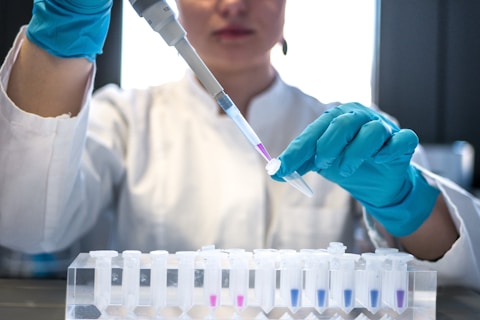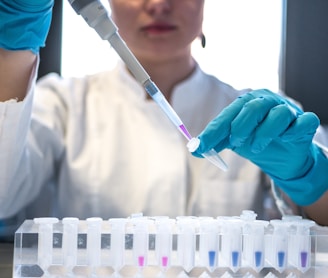

Understanding CLIA Inspection Deficiencies: Their Significance and Strategies for Prevention
In the realm of healthcare, quality assurance and patient safety are paramount. One essential aspect of ensuring these standards are met is the Clinical Laboratory Improvement Amendments (CLIA) program. CLIA regulations are in place to guarantee the accuracy, reliability, and timeliness of patient test results in clinical laboratories. Regular CLIA inspections help maintain these standards, but they can also uncover deficiencies that need addressing. In this comprehensive blog, we will delve into CLIA inspection deficiencies, what they signify, and how laboratories can proactively prevent them to enhance patient care and compliance.
CLIA at a Glance
Before delving into the world of CLIA inspection deficiencies, it's essential to understand what CLIA is and its role in healthcare.
What is CLIA?
The Clinical Laboratory Improvement Amendments (CLIA) of 1988 is a federal regulatory framework administered by the Centers for Medicare & Medicaid Services (CMS) to ensure the quality and reliability of laboratory testing. CLIA regulations apply to all clinical laboratories in the United States, regardless of whether they are part of a hospital, clinic, or independent entity.
The primary goals of CLIA are:
Quality Assurance: To ensure that clinical laboratory testing is accurate, reliable, and consistent.
Patient Safety: To protect patients from erroneous test results that could lead to misdiagnosis or incorrect treatment.
Data Integrity: To maintain the integrity of laboratory data, which is crucial for patient care and medical research.
The Importance of CLIA Certification
CLIA certification is essential for laboratories as it allows them to legally perform tests on human specimens for the purpose of diagnosis, prevention, and treatment. Laboratories must adhere to specific quality control and quality assurance measures, proficiency testing, and personnel requirements to obtain and maintain CLIA certification.
CLIA Inspection Deficiencies: Unpacking the Challenges
CLIA inspections are the cornerstone of regulatory oversight in clinical laboratories. These inspections are conducted by state and federal surveyors who assess whether a laboratory complies with CLIA regulations. When deficiencies are identified during an inspection, it signifies that the laboratory is not meeting the required standards in one or more areas. These deficiencies can be classified into several categories:
1. Personnel Qualifications
One common area of deficiency is related to the qualifications of laboratory personnel. This includes issues such as:
Insufficient Training: Personnel may not have received adequate training for their specific roles, leading to errors in testing procedures.
Lack of Documentation: Missing or incomplete records of personnel qualifications and training can result in deficiencies.
Improper Supervision: Supervisory staff may not be overseeing testing activities appropriately.
2. Quality Control and Quality Assurance
Quality control and assurance are critical components of ensuring accurate test results. Common deficiencies in this category include:
Inadequate Quality Control Procedures: Laboratories may fail to establish and implement adequate quality control procedures to monitor the accuracy and precision of tests.
Failure to Correct Problems: Laboratories may identify issues with quality control but fail to take corrective action.
Improper Calibration: Instruments may not be calibrated correctly, leading to inaccurate results.
3. Test Procedures
Laboratories must follow standardized test procedures to maintain accuracy and reliability. Deficiencies in this area may involve:
Incorrect Test Performance: Laboratory personnel may deviate from established procedures, affecting the accuracy of test results.
Incomplete Documentation: Inadequate records of test procedures, reagents used, and equipment maintenance can result in deficiencies.
4. Proficiency Testing
Proficiency testing is essential to assess the accuracy and reliability of laboratory testing. Common deficiencies related to proficiency testing include:
Failure to Participate: Laboratories may not participate in proficiency testing programs as required.
Inaccurate Proficiency Testing Results: Laboratories may receive proficiency testing samples and report incorrect results.
5. Quality Assessment and Data Management
Proper data management is crucial for maintaining the integrity of laboratory results. Deficiencies in this area may include:
Data Integrity Issues: Laboratories may have problems with data entry, storage, or retrieval.
Failure to Document Corrective Actions: When errors occur, laboratories may not adequately document the actions taken to address them.
6. Facilities and Safety
The physical environment and safety measures in a laboratory are also subject to inspection. Deficiencies may include:
Inadequate Safety Protocols: Laboratories may lack appropriate safety measures, putting personnel and patients at risk.
Poor Laboratory Layout: The physical layout of the laboratory may hinder workflow and compliance with regulations.
The Significance of CLIA Inspection Deficiencies
CLIA inspection deficiencies are not merely bureaucratic hurdles; they have significant implications for patient care and laboratory operations. Understanding the importance of addressing these deficiencies is crucial for ensuring the reliability of laboratory results and patient safety.
1. Impact on Patient Care
Erroneous test results due to deficiencies in laboratory procedures can have severe consequences for patient care. Misdiagnosis, incorrect treatment plans, and delayed interventions can all result from unreliable laboratory testing. CLIA regulations exist to prevent such errors and protect patient health.
2. Legal and Financial Consequences
Laboratories that fail to address CLIA deficiencies can face legal and financial repercussions. These may include fines, suspension or revocation of CLIA certification, and liability in case of patient harm. Ensuring compliance with CLIA regulations is not only ethically but also legally imperative.
3. Reputational Damage
Public trust is paramount in healthcare. Laboratories with a history of CLIA deficiencies may suffer reputational damage, leading to a loss of patients, referring physicians, and business opportunities. Reputation is challenging to rebuild once tarnished.
4. Regulatory Scrutiny
Laboratories with a track record of CLIA deficiencies may come under increased regulatory scrutiny. Frequent inspections and stricter oversight can disrupt laboratory operations and put additional strain on resources.
5. Impact on Research
Inaccurate laboratory results can affect medical research, potentially leading to the publication of flawed studies or the misdirection of research efforts. This not only wastes resources but can also harm scientific progress.
Preventing CLIA Inspection Deficiencies: Best Practices
To ensure compliance with CLIA regulations and prevent deficiencies, laboratories must adopt a proactive approach. Here are some best practices to consider:
1. Invest in Personnel Training
A well-trained workforce is the foundation of a compliant laboratory. Ensure that all personnel receive appropriate training and ongoing education. This includes both technical skills and an understanding of CLIA regulations. Keep detailed records of training activities.
2. Establish Robust Quality Control and Assurance Programs
Develop and implement comprehensive quality control and quality assurance programs. Regularly review and update these programs to reflect changing regulations and technological advancements. Ensure that all staff members understand their roles in quality management.
3. Regularly Review and Update Procedures
Laboratory procedures should be standardized, documented, and regularly reviewed. Stay up-to-date with best practices in laboratory medicine and adjust procedures as needed. Encourage open communication among staff to identify areas for improvement.
4. Engage in Proficiency Testing
Participate actively in proficiency testing programs. This ensures that your laboratory's testing accuracy is evaluated independently. Use proficiency testing results as a valuable tool for continuous improvement.
5. Emphasize Data Management
Implement robust data management systems that adhere to data integrity principles. Maintain clear documentation of all laboratory activities, from test performance to corrective actions taken in response to deficiencies.
6. Prioritize Safety
Create a culture of safety within your laboratory. Regularly assess safety protocols, provide adequate training on safety measures, and conduct safety drills. Address any safety concerns promptly.
7. Ensure Facility Compliance
Regularly review the physical layout of your laboratory to ensure it supports efficient workflow and complies with safety and regulatory requirements. Address any deficiencies in facilities promptly.
8. Collaborate with Regulatory Experts
Consider partnering with experts or consultants with expertise in CLIA regulations. They can provide guidance on compliance, assist with documentation, and help prepare for inspections.
9. Monitor and Self-Audit
Conduct internal audits and self-assessments on a regular basis. This proactive approach allows you to identify and address potential deficiencies before they are identified during an official inspection.
10. Stay Informed
Keep your laboratory team informed about changes in CLIA regulations and industry best practices. Attend conferences, webinars, and workshops to stay up-to-date.
Conclusion
CLIA inspection deficiencies are a significant concern for clinical laboratories, affecting patient care, legal compliance, reputation, and research efforts. However, with a proactive approach and a commitment to quality, laboratories can minimize the risk of deficiencies and ensure they consistently meet CLIA regulations.
Remember that the ultimate goal of CLIA regulations is to safeguard patient health and ensure the accuracy and reliability of laboratory testing. By prioritizing personnel training, quality control, data management, safety, and continuous improvement, laboratories can provide high-quality, trustworthy results that benefit both patients and the healthcare system as a whole.
Sound Medical Lab Consultants
sales@soundlabconsult.com
602-874-1311
National Clinical Lab Consultants for CLIA COLA CAP TJC
24/7/365 Support
Laboratory Billing Experts
Mobile Laboratory Billing
Lab Lead Gen and Sales
Lab Phone Support and Data Entry
Lab Back End Support
Lab Critical Call Services
